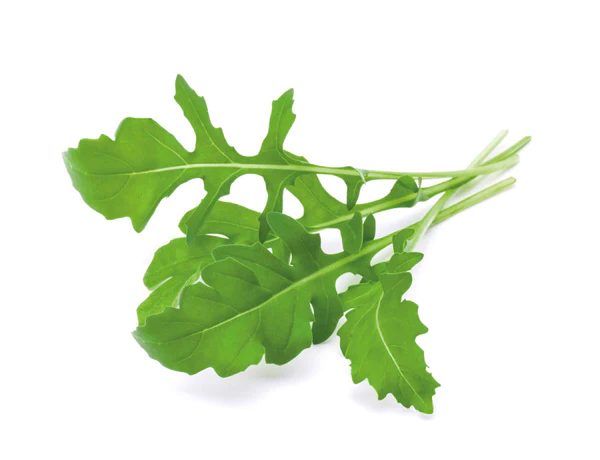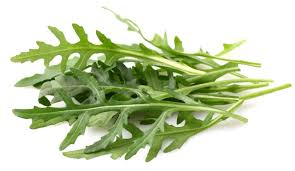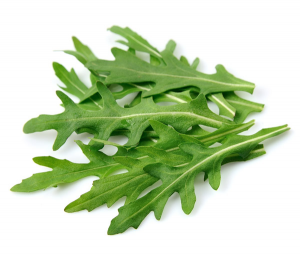Arugula is a sensitive plant, which is an excellent example of tracking the texture response to various nutrition, lighting, temperature and humidity conditions. Under different conditions, the same variety immediately changes the taste, density and shape of the leaves.

🌿For example, with active lighting, the taste of arugula becomes sharper and more caustic, with reduced lighting it becomes more tender and juicier.
At different temperatures, arugula produces light leaves of a more rounded shape, or, conversely, darker and carved small leaves.
It is also very important to understand which varieties to grow and what to expect in terms of leaf texture, density of tastes, aftertaste and richness of aroma.
By setting program parameters in the "Virtual Agronomist" software, it is possible to obtain a completely different final product from the same variety.
Genetic differences within plant varieties are also important.
These are indicators of the presence and quantity of mustard oils, sugars, pyrazines, which give an earthy taste, or alkaloids, which are responsible for the original "mushroom" smell.
🌿Arugula is a relatively unpretentious plant, but sensitive and wayward. It is grown quite well in hydroponics, but the taste with this technology will be very smooth. It is important to consider that arugula actively consumes food and this is the plant that literally needs a strict diet. With hydroponic technology, arugula actively absorbs heavy metal salts and nitrites.
So if you grow a crop in a hydroponic setup, you need to strictly control what exactly the plant will receive in order to get a safe harvest manually.
These problems do not arise with an accurate supply of nutrition and a regime of temperature differences and competent lighting through a virtual agronomist.
Here, the human factor and manual labor are perfectly replaced by a virtual agronomist. To ensure the same quality of taste, texture of the leaf and timely harvesting, Greenbar has developed 94 parameters. And they are all just for arugula!

🌿With the clear work of the virtual agronomist, the output will be an environmentally friendly and safe harvest. When making money on the sale of arugula, this is a serious advantage. Especially if you do an analysis and get the appropriate result. Enriching the roots of arugula with oxygen is important, so we use increased circulation in the root mass.
Important: growing arugula is also economically profitable because it can produce an excellent harvest in a relatively small area. For example, from m2 it is possible to get from 4 kg of fresh arugula greens.
This is 144 pots of 30-35 grams in 32 days.
It is also possible to collect arugula for babylist every 10 days.

There are 2 cultivation technologies:
🌿Annual types of arugula can be classified into several varieties, including early, mid-season and late varieties. These plants are usually sold in pots and are characterized by a high rate of green mass growth, as well as a universal taste, which makes them popular among gardeners and cooks. Due to its rapid growth, arugula becomes available for harvesting within a few weeks after planting, which makes it an ideal option for those who want to get fresh greens in the shortest possible time. Planting seeds with this concept of product delivery involves dense sowing of the pot area.
Or, using a new technology, we put squares - mats, replacing the substrate. This growing format is more effective because the mats maintain moisture longer and are much cheaper. A complete rejection of plastic pots is also relevant.
This is an important component of environmentally friendly packaging and waste minimization.
🌿Biennial types of arugula have a more powerful stem and a developed root system, which allows them to successfully survive the winter. In the spring, such plants release a new stem with foliage, providing not only a stable harvest in the spring, but also the opportunity to implement sustainable agronomic practices. Modern technologies, such as GreenBar - a virtual agronomist, open up new horizons for gardeners who want to optimize the processes of growth and care of plants. The use of innovative technologies in agronomy allows for the most efficient management of resources and improvement of product quality. The implementation of solutions such as GreenBar helps to take into account all the features of the growth of arugula and other crops, adapting approaches to modern conditions.

In sales, special attention is paid to thin and clear arugula leaves of small size and uniform shape. To achieve a high-quality arugula harvest, it is important to observe specific conditions, which include not only the balance of nutrients, but also the optimal temperature regime.
When using hydroponic technology, achieving such results becomes extremely difficult, since the plants receive unstandardized nutrition and are constantly in fertilizer. This does not allow you to control the exact growth parameters, which negatively affects the quality of the leaves.
With the help of innovative technologies, such as Greenbar and a virtual agronomist, it is possible to significantly improve the quality of plants and improve the final product. These approaches offer a system of dosed nutrition and competent construction of a moisture regime, which leads to the receipt of leaves with ideal characteristics suitable for sale.
Activation of the technological map of the virtual agronomist is able to convey the use of technologies so that city farmers significantly improve the quality of arugula for sale, as well as reduce the time and resources needed to care for plants. It is important to note that high-quality arugula is not only valued in the market, but also attracts consumers' attention to healthy and high-quality nutrition.

An important aspect of high-quality arugula leaf is the absence of diseases and insects. Arugula is rarely susceptible to a number of diseases and damage by fungi, mold, powdery mildew, etc.
However, insects love it.
Different types of midges manage to appear out of nowhere, sometimes even with timely prevention. For example, the cruciferous flea beetle is the most frequent uninvited guest on arugula plants. The pest lives on the leaves, gnawing oval holes in them. Young plants suffer especially from its "activity". The larvae also cause harm, eating young roots and gnawing into the leaves, which makes delivery impossible. The cabbage moth also works in eating, and the arugula is seriously damaged by larvae (caterpillars), first laying a light, elongated oval strip along the underside of the leaf, along the main veins, and then gnawing out the leaves.
In the fight against insects, a number of chemical preparations are mainly used, they are used to treat plantings, which has a very bad effect on the quality of the leaves for consumers. If with fertilizers and low-quality hydroponic installations everything is more or less clear, then how to avoid harmful chemical impurities that plants receive on the leaf, the consumer knows little.
The main rule is to rinse well, however, the chemicals are absorbed into the plant itself and it is impossible to wash out such treatment, such a harvest will have a number of consequences.

Here we can see another important advantage of GreenBar equipment over all the others. In closed systems, conditions are created under which the introduction of insects is reduced to almost zero. And the plants do not require any processing or feeding on the leaf.
Since the modules of the Greenbar City Farm create optimal conditions without using soil, insects do not start in the equipment, and the plants are practically unable to get sick. There is no use of chemicals on the leaf, which guarantees an organic, environmentally friendly harvest.

The algorithm for growing arugula on a closed city farm is quite simple and does not differ from growing lettuce, basil and other spices.
First, the seeds are placed in mats or pots and kept in a humid environment, then they are sent to the seedling section and kept there until strong sprouts form.
Detailed terms are indicated on the cultivation technology page in the users section.
Continuation of the article:
Use of arugula in cooking and medicine







